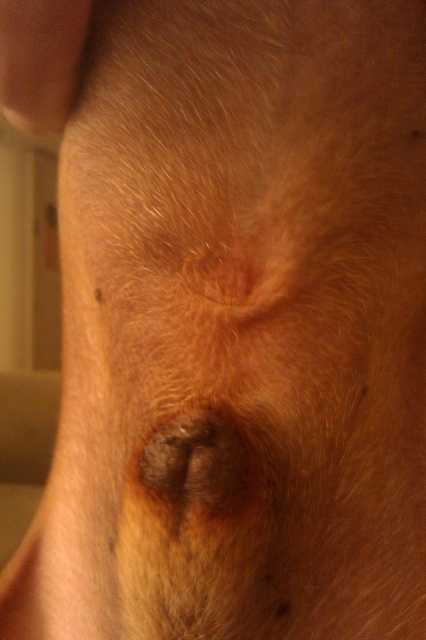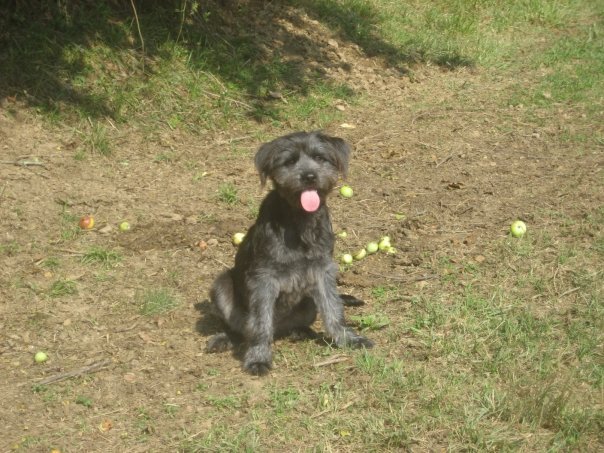Questionhi,
my name is sarah and i have had my dog sandy for 14 years (since i was 15). He is a small mixed breed with long hair, i just got him from someones back yard litter when he was a puppy. He was the only long haired and the runt. I am now 29 and have my own family. Recently we moved into a new house and since then sandy has not been himself. Sandy has always been easly stessed and his primary goal in life is always to please me.
He doesn't eat, has lost 3 pounds (13 pound dog) and has bad diarrehia. we took him to the vet yesterday and he is not optimistic, he has very high white blood cell count and abnormal pancreas testings. In order to find out whats wrong we would need to look further with more tests and staying in the clinic. I just think that is to hard on him and want him at home. We have started antibiotics this morning and hoping for the best, if it doesn't work then we will have to consider this as the end. i am just wondering how to get him to eat, have tried all kinds of wet food, some table food, hand feeding. yesterday i got him to eat a hot dog but nothing this morning. he usally begs for table food but now nothing. also should i consider more testing ect? i just want him comfortable and happy.
any advice or help would be apprecieated.
cheers
sarah
Answer
Hi Sarah,
I'm sorry to hear that your dog is doing poorly. Yes, you should consider additional testing, as whatever the condition is, may be treatable.
A dog with pancreas problems (you didn't say if it was pancreatitis) should receive a low fat diet. The diet should also be rich in carbohydrates, as these have a weak effect on the gastrointestinal hormones, which trigger the pancreatic enzymes. Cooked rice (either brown or white) or alternatively you can use cooked potato or oatmeal (unsweetened), are highly digestible, rich in carbohydrates and can be fed to the dog in small amounts. Along with rice (or potato or oatmeal) mix in low fat cottage cheese or boiled skinless chicken breast, or jarred baby food (turkey, or chicken). A small spoonful of canned pumpkin (not pumpkin pie mix) adds fiber while also soothing the dog's stomach. Mix this together and serve it to your dog warmed just a little for each meal. If your dog is suffering from canine pancreatitis, 3 or 4 small meals a day are preferable to one or two large meals, it makes digestion easier on your dog. Reintroduction of your dog's regular dog food must be gradual and supervised by your veterinarian
Some dogs with pancreatitis are unwilling to eat, and need to receive a liquid diet that may be fed via a tube placed through the nose, esophagus, or stomach. Don't put off talking to your vet about this possibility, if you can't get your dog to eat.
Vitamins C and E are antioxidants that can reduce the frequency and severity of dog pancreatitis
flare-ups. A brand to consider is Vetri-Science Cell Advance 440 antioxidant supplement. For a dog the size of yours, sprinkle one capsule into his food each day. It can be spread out over several meals. Talk to your vet before introducing a vitamin supplement as they can react or interfere with some medications.
If this is pancreatitis, it is a painful serious condition that requires ample recovery time. You should ask your vet to provide your dog with pain relief medication.
I hope I've been a help.
Best of luck,
Patti

 about babygirl my 14 week yorkie
Question
babygirl brooklyn
i do no whats going on with
about babygirl my 14 week yorkie
Question
babygirl brooklyn
i do no whats going on with
 Found Dog
Question
this is what it looks
Hello my is sara and my
Found Dog
Question
this is what it looks
Hello my is sara and my
 dog who growls and nips
Question
Ladybug
We adopted a rescue dog, Ladybu
dog who growls and nips
Question
Ladybug
We adopted a rescue dog, Ladybu
 My 2 yr old blacks eating habits.
Question
Pic of Tula
I have a 2yr old black lab. Her an
My 2 yr old blacks eating habits.
Question
Pic of Tula
I have a 2yr old black lab. Her an
 Help with my best friend :)
Question
cash
Hello!
&
Help with my best friend :)
Question
cash
Hello!
&